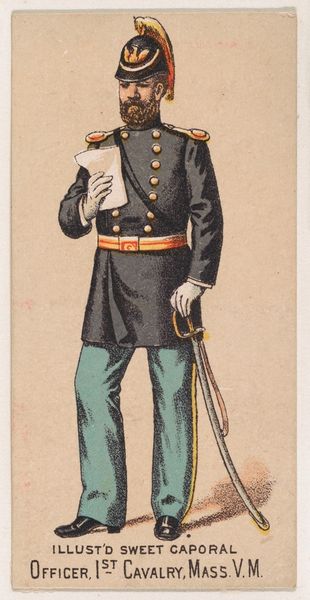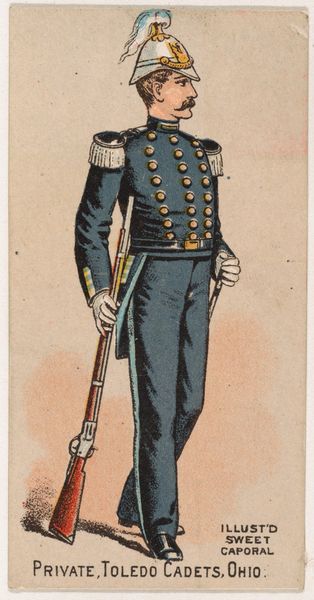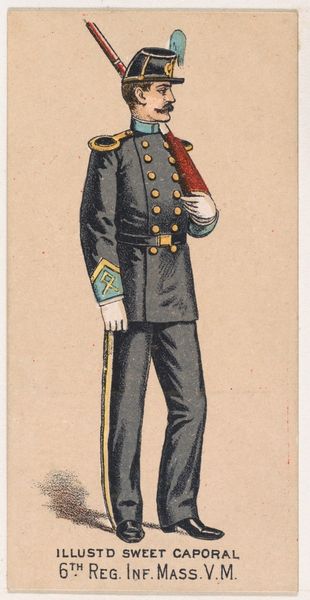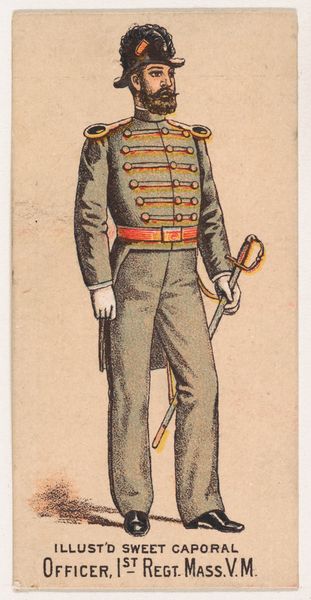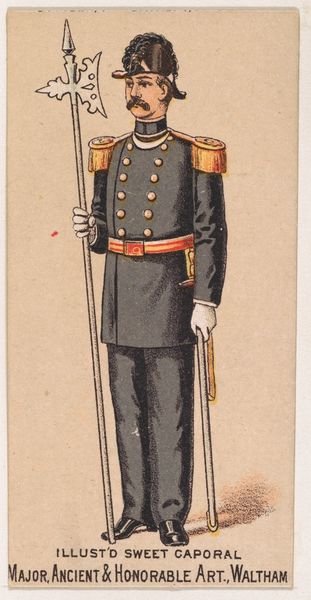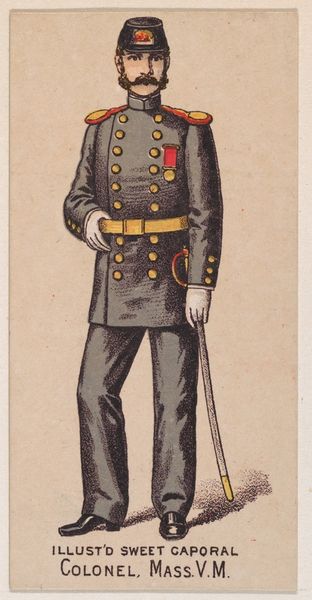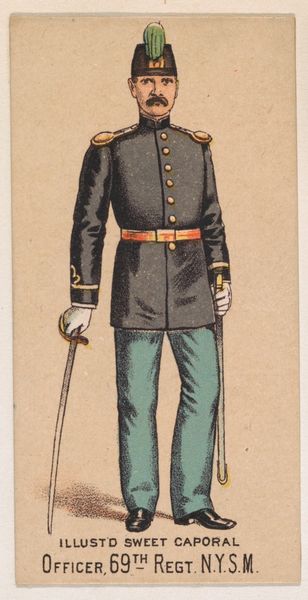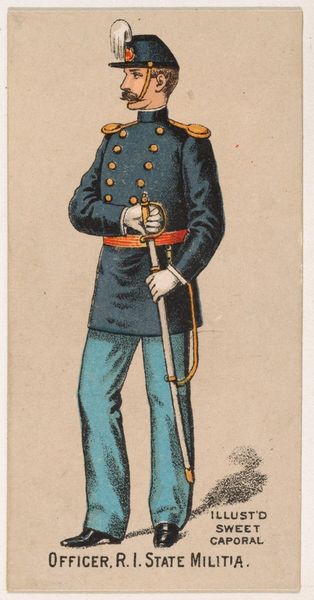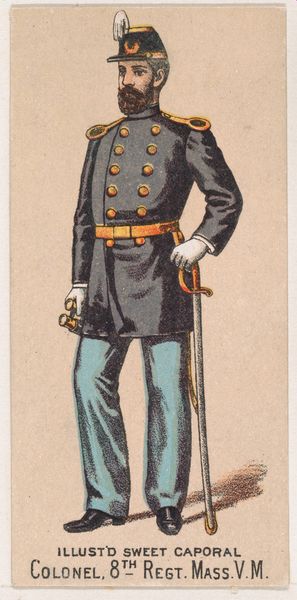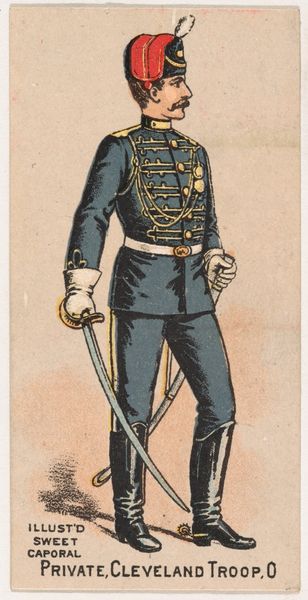
Colonel, 3rd Regiment, Massachusetts, V.M., from the Military Series (N224) issued by Kinney Tobacco Company to promote Sweet Caporal Cigarettes 1888
0:00
0:00
Dimensions: Sheet: 2 3/4 × 1 1/2 in. (7 × 3.8 cm)
Copyright: Public Domain
Curator: Here we have a lithograph from 1888. It's from the Kinney Brothers Tobacco Company, part of their "Military Series" to promote Sweet Caporal Cigarettes. Editor: It's fascinating how even on such a small scale, the artist manages to convey a certain... stiffness. Almost like a paper doll depiction of authority. Curator: Precisely! Let’s look at that. Notice how the figure is flattened, almost two-dimensional. There’s a clear hierarchy in the forms. The buttons, belt, epaulettes are rigorously aligned. Even the shadow is stylized. The artist is interested in presenting an image of perfect order. Editor: That carefully calibrated presentation screams ‘Colonel’ to me. What a compelling catalog of status. The sword as an undeniable symbol of power. But there’s also a level of accessibility at play with those carefully delineated pieces of paper—some missives being clutched perhaps? Do we think this speaks to notions of information flow within command structures at the time? Curator: Intriguing point! These visual elements work together. Note the use of bright reds and golds against the muted grays of the uniform. These color choices highlight not just status but visibility. The artist uses color as a structuring principle within the small picture plane. Editor: I agree. The colors create visual focal points, sure, but more than that, they speak to the deeper aspirations of the sitter, the longing for not only admiration but respect as well. But given that this was a trade card included with cigarettes... does it aim to lionize this man specifically, or use him as a generalized emblem? Is it targeted at other servicemen, or civilian consumers aspiring toward upward mobility, who bought and traded them? Curator: An essential observation. Consider also the print's original context; these cards became miniature collectibles. Mass dissemination transforms the artwork itself. The rigid composition almost makes the artwork into a symbol in itself—of industry and mass culture! Editor: I never would have considered that given its original role! It's so thought-provoking to reconsider artwork, like this small-scale print, not just for artistic elements, but also within a much broader socio-cultural framework, when they carry deeper meanings that resonate even today. Curator: It speaks to the inherent formal structure embedded in all visual culture, whether intentional or not. These organizing structures speak volumes about artistic choices!
Comments
No comments
Be the first to comment and join the conversation on the ultimate creative platform.
